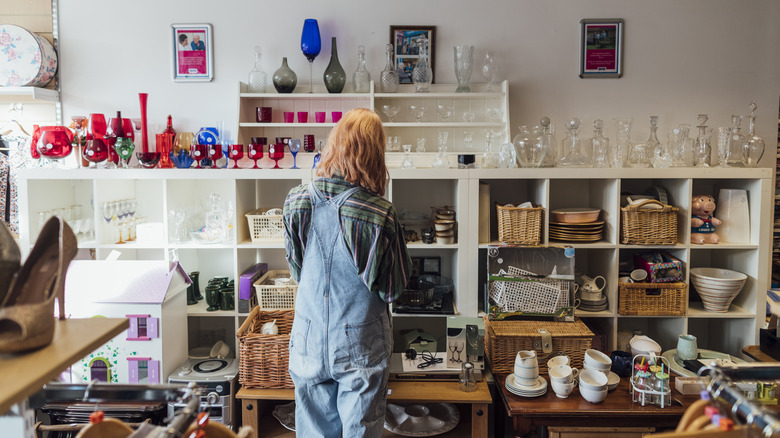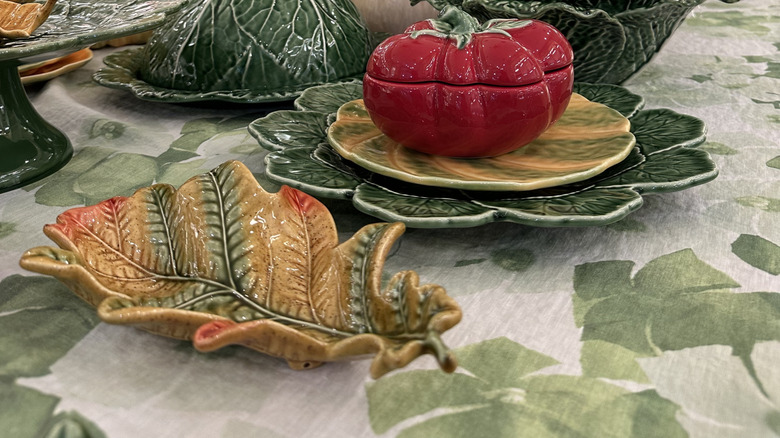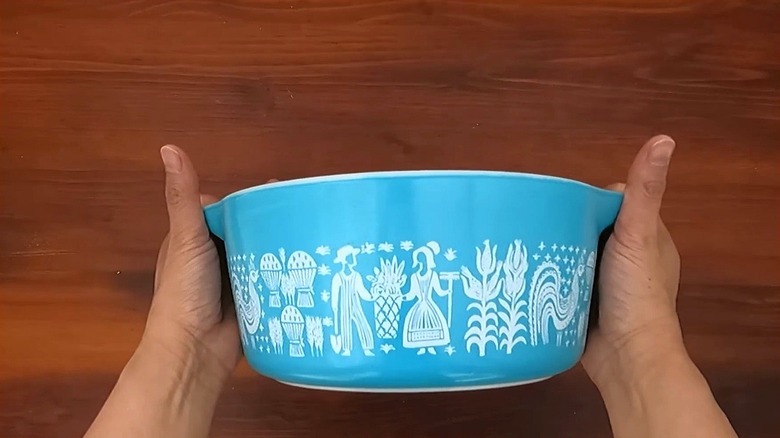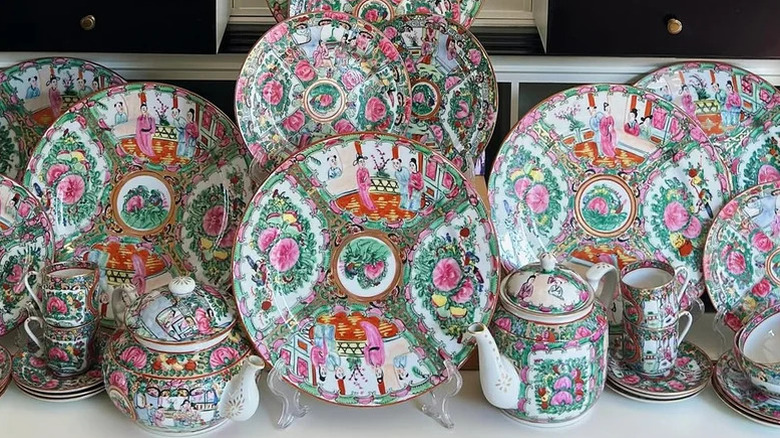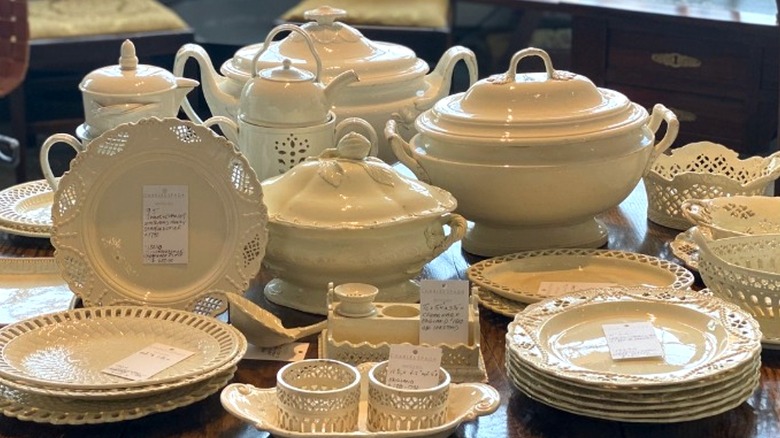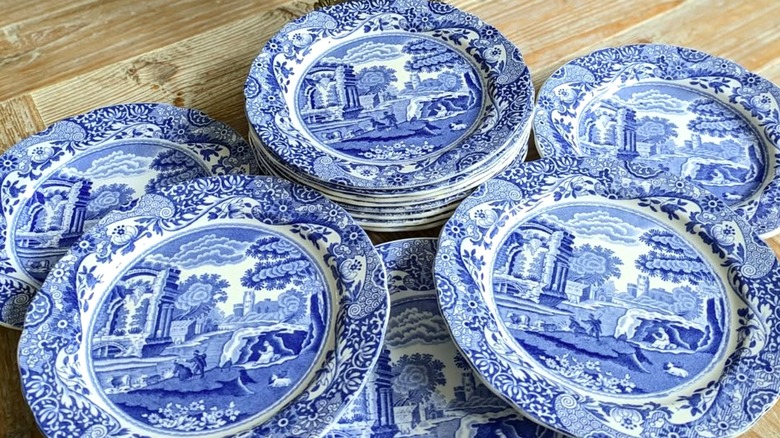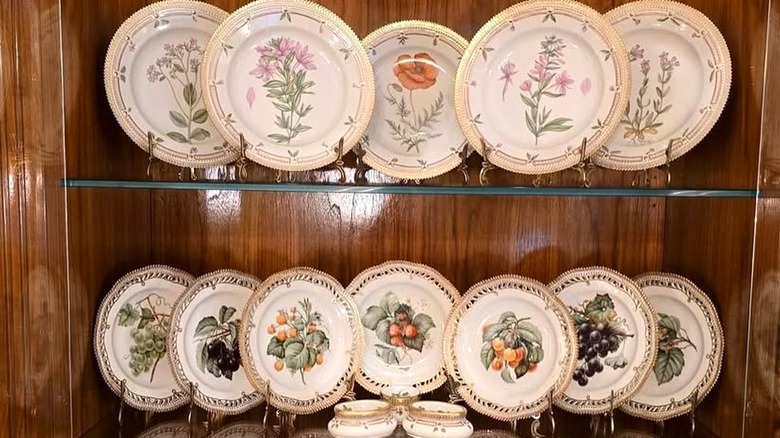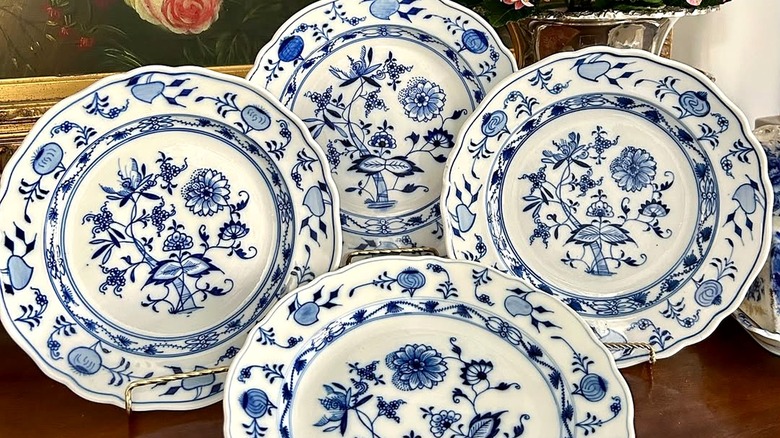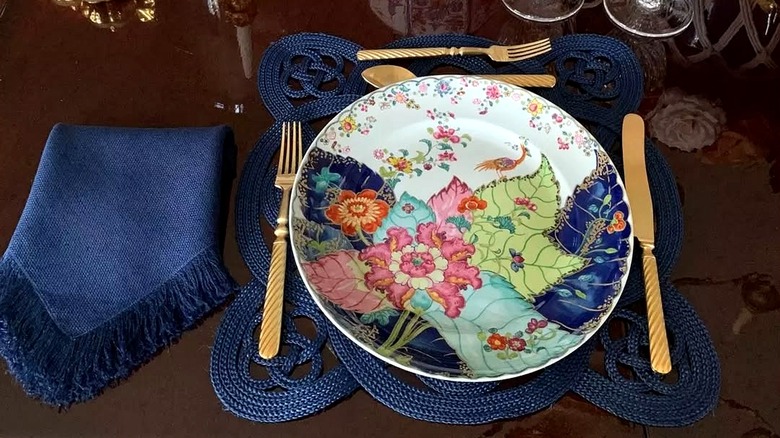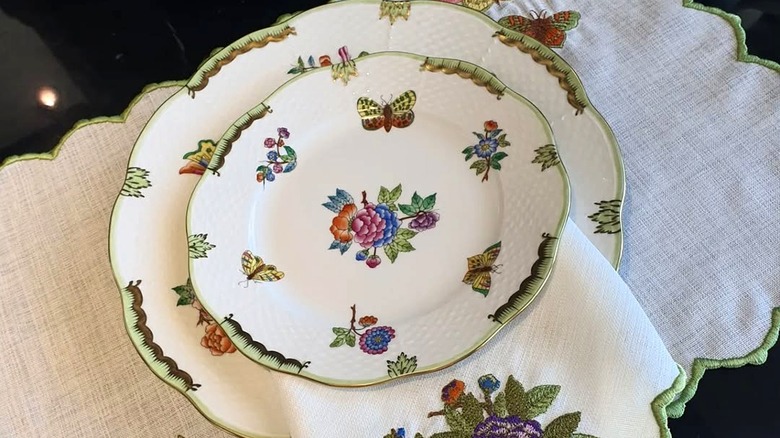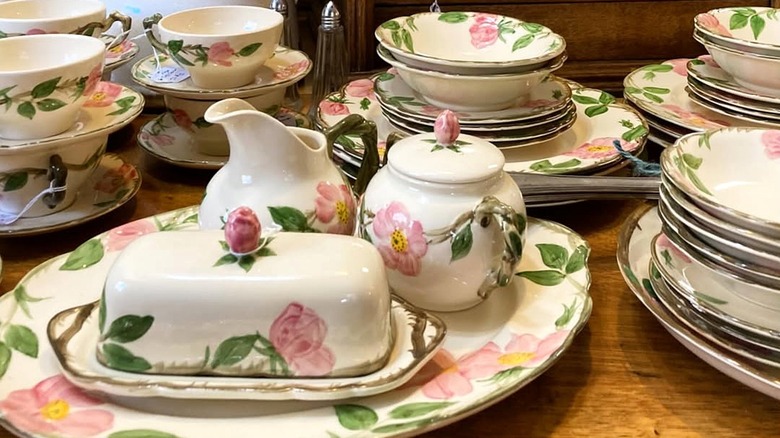Have You Spotted These 10 High-Demand Dishware Patterns At The Thrift Store?
Vintage dishware is the stuff of dreams. The gorgeous, intricate delicacy of a bygone era can become an attainable reality when sourced from local thrift stores and other resale markets. If you're lucky, you may even stumble upon true gems for a modest amount and start creating a valuable collection to be passed on to future generations. For this, you need to know what to look for. This list compiles some of the most popular vintage dishware patterns from renowned brands and time-honored traditions, some still being made today, and others retired, which will undoubtedly bring charm and beauty to your treasure trove.
The older and rarer the piece, the more valuable it is likely to be. But there is one caveat — while those are the pieces you'll definitely want to take home, keep in mind that you may not want to risk using them for food consumption. Dishware that was made before the 1970s will almost certainly contain dangerous levels of toxic lead in its decorative enamels and glazes. Not only that, but china that is cracked, fading, or peeling, as vintage china often is, is especially prone to leaching.
Bordallo Pinheiro's Cabbage Ware
Portugal has a long, prosperous history of ceramics, of which Bordallo Pinheiro may be the most recognizable representative. The company has been making dishware since as early as 1884, but it's its cabbage ware that has transcended borders to become one of the most sought-after dinner table additions. Vastly reproduced through the years, this unique example of whimsical majolica is making a trendy comeback in kitchens. Look for an incised mark of a frog inside a circle on the bottom of the piece. Marks in more recent products are painted or stamped.
Pyrex's Amish Butterprint
Amish Butterprint Pyrex is one of the most valuable vintage Pyrex pieces to look out for at thrift shops and estate sales. In general, Pyrex is a highly collectible brand of dishware with an enthusiastic fandom on the hunt for the absolute rarest designs. Unless you find it in uncommon color combinations, the Amish Butterprint pattern, manufactured between 1957 and 1968, won't exactly make you a thousand bucks, but it is nevertheless one of the most beloved lines the iconic Corning company has ever produced, thanks to its adorable blue color and quaint, nostalgic motifs.
Rose Medallion
Rose Medallion is one of two Famille Rose patterns you should keep an eye out for when thrifting. Famille Rose, Chinese porcelain with vibrant pink enamels, was one of the most popular ceramic imports in the 18th and 19th centuries, with the Rose Medallion being one of its most beloved examples. It features a central medallion with peonies, surrounded by panels of nature or court life. It is still made today, but if you're looking for value, focus on pieces that look hand-painted and showcase stunning attention to detail.
English creamware
If you're looking for ceramic that was once so popular that even the Queen of the United Kingdom wanted it for her tablescape, look no further than English creamware, more specifically, Queensware by Wedgwood. This is the classic dishware worth looking out for, thanks to its distinct cream color and elegant yet robust appearance. Prolific creamware manufacturer Wedgwood changed the name of its products to Queensware after Queen Charlotte began commissioning multiple sets for her personal collection in 1765. Look for the maker's mark, which commonly features a large vase and the brand name.
Spode's Blue Italian
Blue and white transferware is always a good shout when thrifting vintage dishware, but certain patterns are particularly valuable. Spode's Blue Italian line, for instance, has been in production for over 200 years, and it is still coveted today. At its center is a rural scene of the Italian countryside where two men herd cattle near the river. The border is adorned with floral details in the style of Japanese and Chinese porcelain. To differentiate modern models from antiques, look for datemarks. These feature a letter (month) over two numbers (year).
Royal Copenhagen's Flora Danica
Believe it or not, you can actually stumble upon Royal Copenhagen's Flora Danica dishware, often described as the most expensive dishware on the market, when you're out roaming your favorite thrift stores. The pattern gets its name from the Danish botany atlas "Flora Danica," from which it also borrows its imagery. It was first commissioned in 1790 by King Christian VII of Denmark as a gift to Empress Catherine II of Russia to make amends following frustrated war efforts. Each piece has been handmade and made-to-order ever since, with prices surpassing $40,000.
Meissen's Blue Onion
As its very first manufacturer, Meissen is intrinsically connected to the history of European porcelain. One of its oldest and most esteemed patterns is the Blue Onion, named after the onion-shaped flowers and plants that adorn its borders. Unlike the other white and blue dishware on this list, Blue Onion is hand-painted, meaning each piece is absolutely singular. This pattern has been in production since 1739, but be careful not to confuse it with Blue Danube porcelain, produced in Japan between the 1950s and the 2000s, which has very similar motifs.
Tobacco Leaf
Tobacco Leaf is the second Famille Rose dishware you'll want to add to your collection. Sharing Rose Medallion's rich enamels, this pattern is simpler, yet no less dazzling for it. It is defined by sprawling, large-scale, gilded leaf motifs in blues, greens, and yellows, delicately framing a pink flower at their center. Occasionally, a small bird resembling a phoenix rests atop the leaves. Today, this pattern is reproduced by luxury china maker Mottahedeh. While true antiques may be hard to come by, finding a well-preserved Mottahedeh piece for less than $100 is still a good deal.
Herend's Queen Victoria
Yet another dishware with the Royal seal of approval, Herend's Queen Victoria pattern was picked by the British monarch for her personal collection after winning a gold medal at the 1851 Great Exhibition in London. It features beautiful Chinese-inspired floral and animal motifs in striking greens, blues, pinks, and yellows, framed by a delicate green rim. Because it has been so beloved for generations, and is still being made today, this dishware may just pop up at local antiques sales. A single dinner plate can be worth over $100.
Franciscan's Desert Rose
From Queens to First Ladies, the last entry on this list is reserved for what is commonly described as the best-selling dishware pattern in American history. Franciscan's Desert Rose is the Jackie Kennedy-approved, all-American answer to European and East Asian china. More casual and sturdier than porcelain, this earthenware was first produced in 1941 and quickly became a household staple. To this day, it is beloved for its raised-relief pink flowers, the rich green stems, and the branches cleverly serving as the plates' decorative trims and the cups and saucers' sculptural handles.
